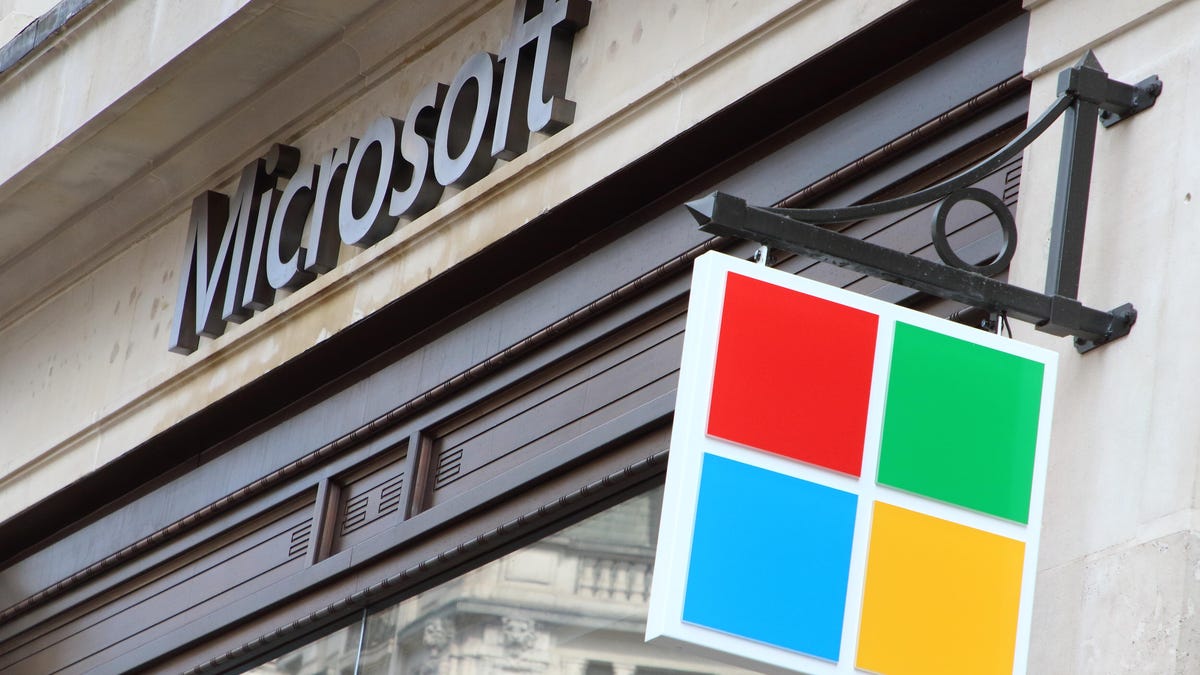Microsoft's first in-depth diversity report shows progress remains slow
After years of publishing workplace demographic data, the software giant is digging further into its diversity and inclusion efforts.

Microsoft has a new diversity and inclusion report out.
Microsoft's first full-fledged diversity and inclusion report tells a well-worn story in the world of tech. When it comes to increasing diversity, progress is slow.
Microsoft has been making public the gender, race and ethnic breakdown of its employees since 2014. With the new 47-page document, it's going further in explaining its programs, partnerships and strategies for increasing diversity and inclusion.
"We wanted to be able to show our work and progress in both [diversity and inclusion], knowing that we are not where we want to be and we will worker harder to continue to be even better," said Lindsay-Rae McIntyre, Microsoft's chief diversity officer.
Microsoft mirrors many fellow tech heavyweights in being largely white and male. Plus, the percentage of women in technical roles is low, and the percentage of underrepresented groups is even lower.
The tech industry has come under increased scrutiny for its lack of diversity from advocates and in the public eye. When companies like Microsoft, Google , Facebook and Apple started publishing diversity reports around 2014, those reports put data behind what many assumed to be true: The tech industry is mostly white guys.
In the years since, progress has inched forward, sometimes by single percentage points from year to year. Microsoft's diversity story hasn't always been smooth. From 2014 to 2016, the percentage of women at the company shrank from 29 percent to just north of 25 percent. CEO Satya Nadella garnered criticism from diversity advocates and media attention in 2014 when he spoke at the Grace Hopper Celebration of Women in Computing and told the conference audience to have faith the system would give women raises along the way. He apologized publicly and in 2018 told CNET women should advocate for themselves.
This year's numbers
Across Microsoft, the percentage of women globally rose from 26.6% to 27.6% since 2018. The percentage of men fell from 73.4% in 2018 to 72.3%. In the US, the percentage of black employees rose from 4.1% to 4.5%. The percentage of Native American and Alaskan Natives stayed flat at 0.5%. Asians account for 33.1% of employees, up from 31.9% last year. Hispanics gained slightly, coming in at 6.3%, up from 6%. The percentage of employees who identify as multiracial increased to 2.1% from 1.8%. Native Hawaiian and Pacific Islanders also stayed flat at 0.2%. Finally, the percentage of white employees dropped from 55.1% to 53.2%.
There are also technical roles to consider. Tech jobs, according to the Bureau of Labor Statistics, are some of the fastest-growing, highest-paying jobs in the country.
Major tech firms, including Microsoft, have struggled to hit even 30% of women in those jobs. Often, the percentages for underrepresented groups are even lower in this area than in the rest of any given company. Globally, the percentage of women in tech roles rose from 19.9% to 21.4%. In the US, the percentage of black employees increased from 2.8% to 3.3% . For Hispanics, the numbers rose from 4.5% to 4.9% , to give a few examples.
Not included in Microsoft's report is intersectional data, like the percentage of women of color. Among tech giants like Microsoft, Google, Apple, Twitter and Facebook, only Google is offering those demographics. Diversity advocates point out the experiences of women of color differ than those of white women, in that they might experience not only gender- but also race-related discrimination, harassment or the like. They argue it's a metric worth tracking.
"We're always looking for ways to increase the cuts of data that we look at, so I think that it's possible that we'll continue to get even more curious about the ways in which we understand our work force," McIntyre said.
The lengthy report does give other information about how Microsoft is doing. For example, pay data shows that "racial and ethnic minorit[y]" employees in the US earn $1.006 for every $1 earned by their white counterparts. Women at Microsoft in the US make $1.001 for every dollar earned by male counterparts. Microsoft didn't offer any intersectional data here, either -- on a national scale, women of color tend to earn less than their white female counterparts.
The report also introduces the "Inclusion Index." In part, the Inclusion Index is the result of internal surveying, which found that 88% of respondents felt "positive sentiments when it came to factors like authenticity, belonging, and a belief in Microsoft's commitment to diversity." More than 80% of the company participated in the survey.
McIntyre also talked about looking back over the years and trying to figure out what works and what doesn't. For example, at one point they thought providing diversity-related training for employees was enough.
"These conversations," she said, "have to live through out an employee's day-to-day experience."

